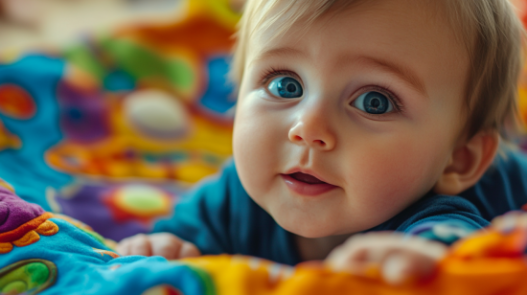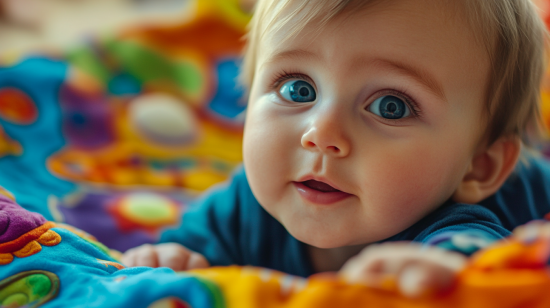You might think, “What games can babies this young possibly play?” Surprisingly, visual stimulation plays an essential role in the brain development of babies, especially between 0-6 months. This period is a critical time for brain growth, particularly when it comes to improving visual perception.
1. Baby’s Brain and Visual Development
Let’s first break down how babies’ vision develops. When a baby is born, their vision isn’t perfect—at best, they can see objects about 20-30 cm away, which is the distance between their face and their mother’s while breastfeeding. At this early stage, their visual system is rapidly developing.
By the time babies reach six months, their vision transitions from being blurry to seeing clear objects, as well as differentiating colors and shapes. This means that their eyes are not just tools to view the world but are windows that connect their brain to the environment. When they encounter an interesting color, shape, or movement, their brains light up, activating neural networks.
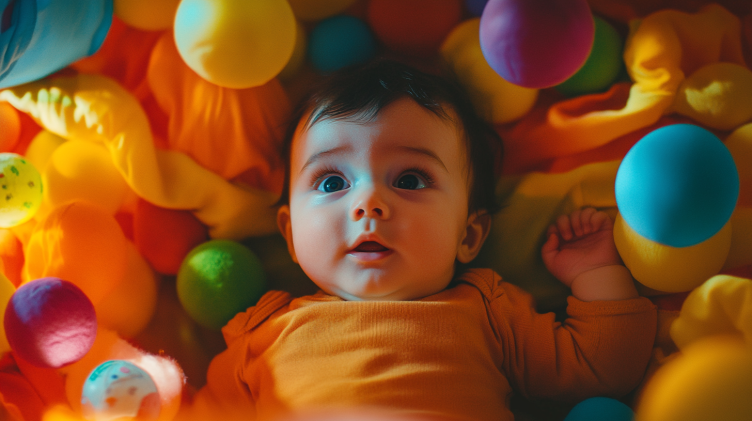
Therefore, visual games are not just fun—they’re vital for brain growth!
2. Visual Games for Babies Aged 0-6 Months
(1) High Contrast Card Games
In the world of babies, high-contrast colors like black and white are the most eye-catching. It may be hard to believe, but just like how we focus on bright, contrasting visuals in movies, babies’ brains react more strongly to high contrast.
How to Play:
You can use black-and-white cards (or make your own by cutting black paper into shapes). Slowly wave the cards in front of your baby, observing if their eyes follow the movement. As your baby grows, introduce colorful cards to stimulate their visual senses even further.

Tip: Don’t shake the cards too intensely. Since babies’ neck and vision development are still maturing, moderate stimulation is most beneficial.
(2) Mirror Games
From birth, babies are drawn to their own reflections. Mirrors can help them engage with their own appearance and stimulate early self-awareness.
How to Play:
Sit with your baby in front of a small mirror. Point at the reflection and say, “Look, it’s you!” At first, your baby may just gaze at the mirror, but over time, they will begin to recognize their reflection, which is a crucial step in developing self-awareness.
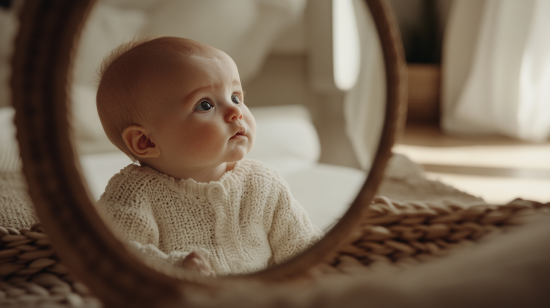
Tip: Ensure the mirror is clean and has no sharp edges to avoid accidents.
(3) Color Recognition Games
By around 4 months, your baby can start distinguishing basic colors like red, yellow, green, and blue. This is a perfect time to enhance their color recognition.
How to Play:
Use brightly colored toys like red balls or yellow toy cars. Move them slowly in front of your baby’s eyes and allow them to focus on the different colors, helping them build color recognition and memory.
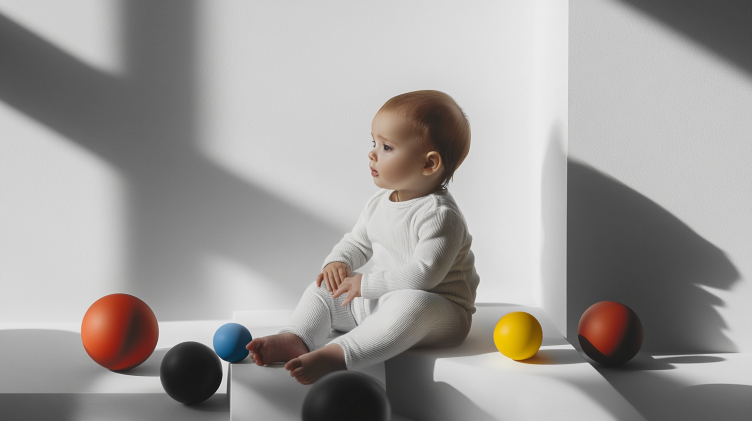
Tip: Keep things simple. Avoid too many patterns or complex shapes, as babies focus better on solid colors.
(4) Light Chase Game
Babies are incredibly sensitive to light, especially flickering lights or moving light sources. This game helps them practice their eye tracking skills and enhances their visual coordination.
How to Play:
Using a flashlight or LED light, turn off the room lights and gently move the light source in front of your baby. See if they can follow the light as it moves up, down, or side to side.
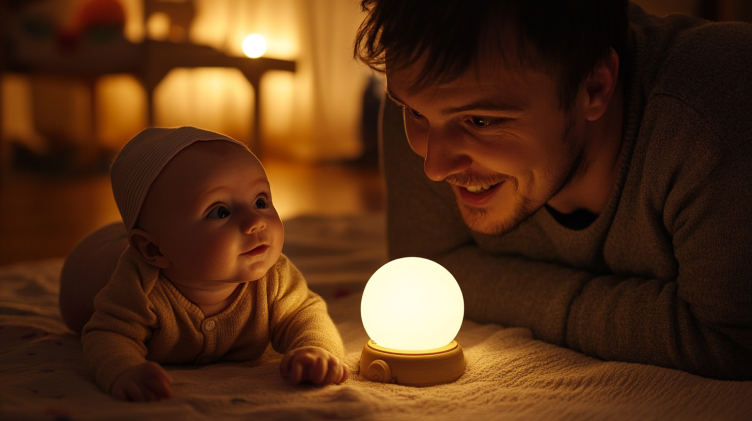
Tip: Be mindful of the light intensity, as too bright a light could harm your baby’s eyes.
(5) Mimicking Facial Expressions
Facial expressions are another form of stimulation that greatly influences a baby’s emotional development. Particularly, the smiles of parents are irresistibly engaging to babies!
How to Play:
Interact with your baby using exaggerated facial expressions—big smiles, funny faces, or expressing different emotions (joy, sadness, etc.). Babies love mimicking and will learn to recognize and replicate these expressions.

Tip: Your natural smile is the most engaging. Authentic emotional expressions are key to a more profound connection.
3. Key Tips: How to Avoid Overstimulation
While visual games are crucial, it’s important to provide just the right amount of stimulation. Too much stimulation can tire your baby’s eyes or even interfere with their brain development.
What to Avoid:
- Avoid prolonged exposure to intense light, as it could damage your baby’s sensitive eyes.
- Don’t change the type of stimulation too frequently. Babies need time to process and adapt to each new stimulus.
- Limit visual playtime to around 15-20 minutes each session to prevent overstimulation and fatigue.
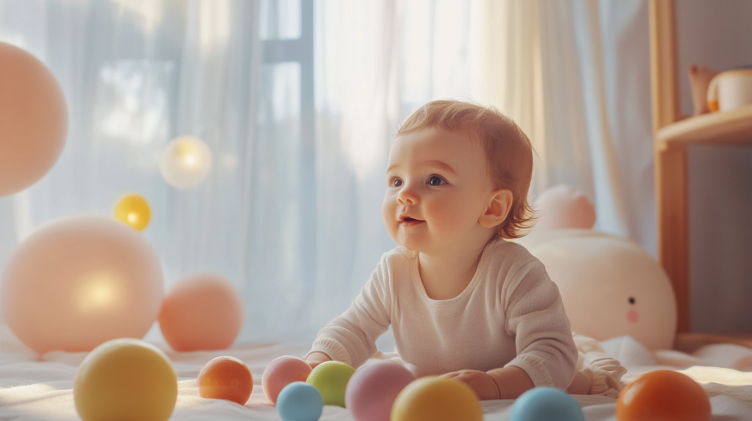
Conclusion
Visual games are more than just fun activities; they’re foundational to a baby’s cognitive and sensory development. By engaging your baby with appropriate visual stimuli, you’re not just helping them perceive the world around them—you’re giving their brain the tools it needs to grow and thrive.
Remember, brain development is a gradual process, and it’s the consistent, gentle stimulation that counts. Patience and the right interactions are the best ways to support your baby’s development.







